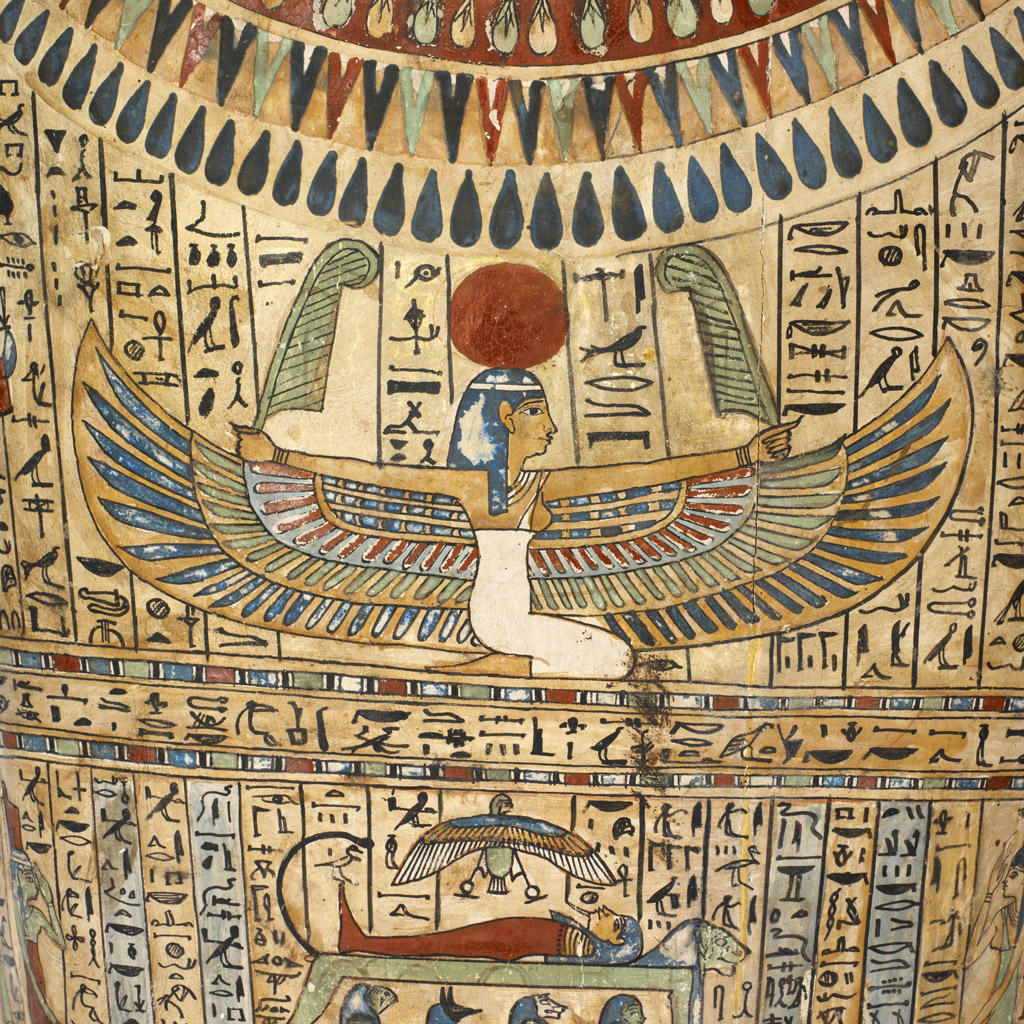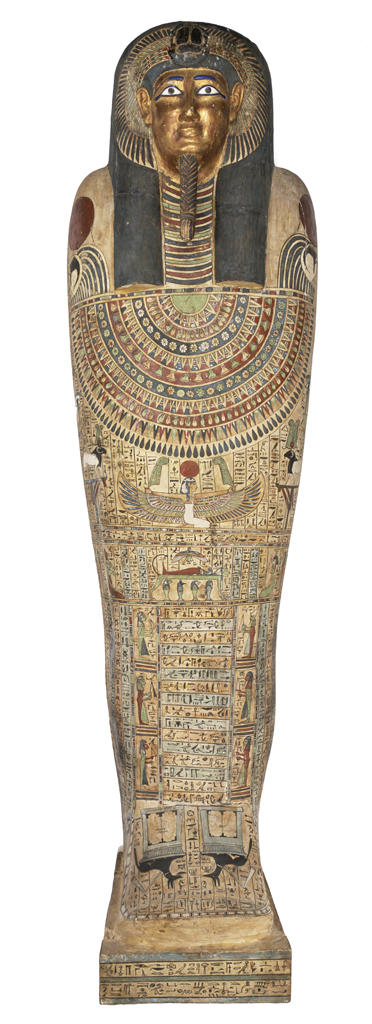Having grown up in Providence, some of my earliest memories involve trips to the RISD Museum. If I was well behaved—that is, I went the whole day without loudly declaring that the Gilbert Stuart portrait was of “the guy who invented the dollar bill” or that the suit of samurai armor was in fact Darth Vader—the visit would end with a visit to Nesmin, the Museum’s own mummy.
When I was in elementary school, visiting the Museum was about finding the same kind of sugar-high excitement and bright colors of my Saturday-morning cartoons (not the intellectual stimulation I seek out now, being the urbane young sophisticate that I so clearly am). Nesmin was the Museum’s equivalent of a belly full of Froot Loops and a TV set to Nickelodeon. Here was a real mummy, a person who lived in ancient Egypt, the crazy place from library books, television, and movies! I remember being confused by how his wrappings were more like a linen shell than the loose bandages of horror movie mummies or my own experiments in embalming myself with Charmin. The tightness of Nesmin’s wrappings was very reassuring: I knew he couldn’t get up and chase me. With the way they’d pull out the brain out through the nose and stick the other organs in special jars, the process of mummification itself was at once gross and engrossing.
As I grew older, my interest in archaeology changed from a diversion to an academic pursuit to my undergraduate major. Being better acquainted with Egypt’s archaeology, history, and language, I was able to put Nesmin in context; his appeal became much less ghoulish and much more human. He was born into the hereditary priesthood of the ancient fertility god Min, an elite position. Living in the Hellenistic Period, when Egypt was ruled as a Greek kingdom, this role made him a bit of a relic in his own time. His beliefs in traditional Egyptian religion extended to his mummification and burial, two necessary steps to ensure his body and name lived on into eternity.
Working in the Museum, I now help shape visitors’ interactions with Nesmin, both through answering questions in the gallery and writing object labels. Nesmin’s status as the only part of the Museum’s collection that was once a living person makes writing about him difficult—I’ve even rewritten this sentence two dozen times. Every choice of pronoun (Is he a “he” or an “it”?) and noun (“person”? “mummy”? “body”? “object”?) is a potentially loaded statement on the ethical treatment of human remains in museums or an existential meditation on the persistence of identity after death. I always come back to thinking about that last detail.
Nesmin has had quite the afterlife, though it’s hardly the one he would have imagined for himself, not being familiar with the concepts of museums, North America, or the ancient civilizations component of the Common Core Standards. It’s impossible to say what effect his funeral rituals had on his soul’s journey to eternal bliss, but every hieroglyph in the spells and genealogy painted on his sarcophagus tell us about him and his world. He’s now spent almost twice as much time teaching RISD Museum visitors about ancient Egypt than he did living there. His immortality is affirmed every time a visitor leaves the Museum having learned about him—doubly so for those who go on to become archaeologists.
Jonathan Migliori ( BA, Archaeology and the Ancient World, Medieval Cultures, and Classics, Brown University, 2011, MA Archaeology, University of Durham 2013) is currently an intern in the Ancient Art and Education departments at the RISD Museum and a member of the RISD CE faculty.


